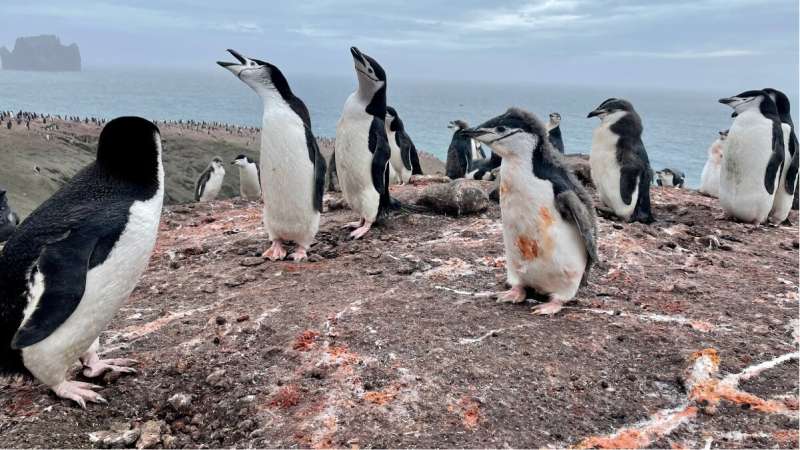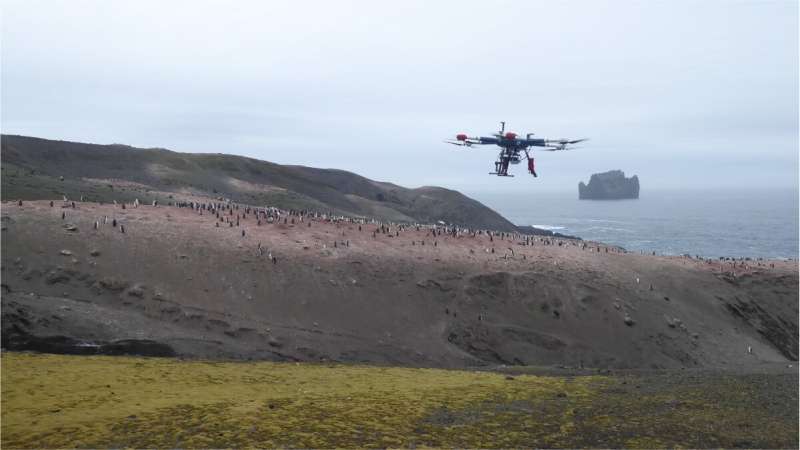Chinstrap penguins nesting area in Vapour Col colony, Deception Island. The soil of the nest is characterized by the iron-rich bright orange guano, indicative of krill-based diet. Credit: Oleg Belyaev Korolev
A team of ecologists and coastal managers at the Institute of Marine Sciences of Andalusia, working with a colleague from the University of Cádiz, both in Spain, has found that the amount of iron being recycled back into the Southern Ocean by chinstrap penguins has been halved over the past several decades due to their declining population.
In their study, reported in the journal Nature Communications, the group used drone images and a deep-learning model to estimate how much less iron is being recycled back into the Southern Ocean by chinstrap penguins.
Chinstrap penguins, as their name suggests, have a long line of black feathers along their chins, and they live on the shores of islands in the Southern and Antarctic Oceans. Prior research has shown that due to the large amounts of krill they eat, they are a major recycler of iron in the Southern Ocean. Prior research has also shown that the population of chinstrap penguins has dropped dramatically since the 1980s, primarily due to global temperature increases. In this new effort, the researchers sought to learn more about the impact of iron recycling in the Southern Ocean as the population of chinstrap penguins declines.
Iron is a precious commodity in the world's oceans; phytoplankton need it to grow. And many of the creatures that live in the sea feed on phytoplankton or other creatures that feed on it. Most of the iron that makes its way into the world's oceans gets there via dust carried by the wind. But not much dust makes its way to the Southern Ocean and the iron there needs to be recycled. If it is not, it will drop to the bottom of the seabed where it cannot be accessed. Part of the recycling of iron in the Southern Ocean has traditionally been done by chinstrap penguins. Their diet is most krill, which feed on phytoplankton. The penguins recycle the iron through their feces, which they eject into the water as they swim.
One of the UAVs used during sampling activities in Vapour Col, Deception Island. Chinstrap penguins can be observed nesting in the neighbouring hill, a typical landscape in Vapour Col. Credit: Oleg Belyaev Korolev
To learn more about the decreasing role that chinstrap penguins are playing in iron recycling, the researchers first used a deep-learning model to assess population numbers collected from census data. They then studied images of penguin colonies captured using drones and made estimates about current penguin population numbers. By combing data from both efforts, they were able to make estimates about both the population numbers of the penguins and the amount of guano they were producing. They found it to be approximately 521 metric tons, which, as they expected, is approximately half of what it was in the 1980s.
More information: Oleg Belyaev et al, The contribution of penguin guano to the Southern Ocean iron pool, Nature Communications (2023). DOI: 10.1038/s41467-023-37132-5
Journal information: Nature Communications
© 2023 Science X Network

























